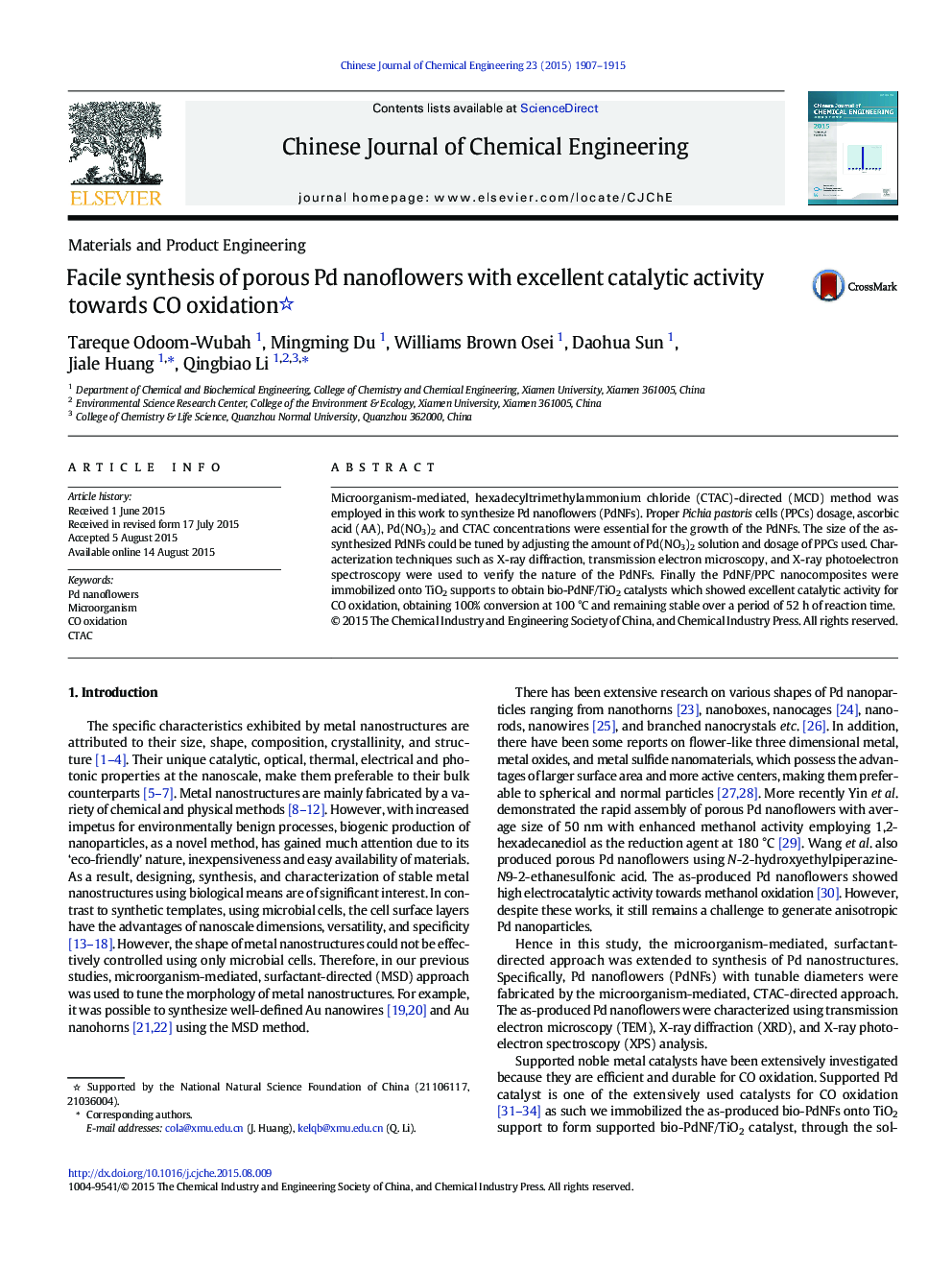| Article ID | Journal | Published Year | Pages | File Type |
|---|---|---|---|---|
| 167971 | Chinese Journal of Chemical Engineering | 2015 | 9 Pages |
Microorganism-mediated, hexadecyltrimethylammonium chloride (CTAC)-directed (MCD) method was employed in this work to synthesize Pd nanoflowers (PdNFs). Proper Pichia pastoris cells (PPCs) dosage, ascorbic acid (AA), Pd(NO3)2 and CTAC concentrations were essential for the growth of the PdNFs. The size of the as-synthesized PdNFs could be tuned by adjusting the amount of Pd(NO3)2 solution and dosage of PPCs used. Characterization techniques such as X-ray diffraction, transmission electron microscopy, and X-ray photoelectron spectroscopy were used to verify the nature of the PdNFs. Finally the PdNF/PPC nanocomposites were immobilized onto TiO2 supports to obtain bio-PdNF/TiO2 catalysts which showed excellent catalytic activity for CO oxidation, obtaining 100% conversion at 100 °C and remaining stable over a period of 52 h of reaction time.
Graphical abstractFigure optionsDownload full-size imageDownload as PowerPoint slide
